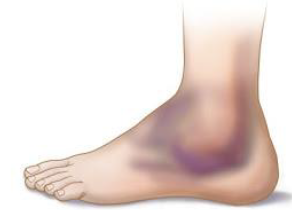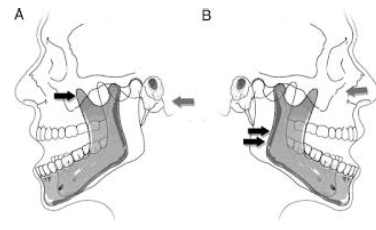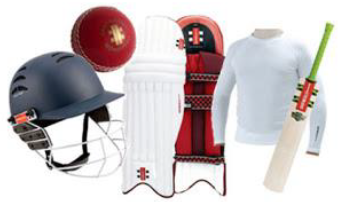UNIT - 7 (Part - 2)
Topics of Unit : 7
♦ Concept, Aims & Scope of Sports Medicine
♦ Sports Injuries: -Classifications, Causes & Preventive Measures
♦ First Aid- Aims & Objectives
♦ Management of Injuries :
Soft Tissue Injuries:(Abrasion, Contusion, Laceration, Incision, Sprain &Strain)
Bone & Joint Injuries: (Dislocation, Fractures: Stress Fracture, Green Stick, Communated, Transverse Oblique & Impacted)
7.1 Sports medicine
7.1 Concept and Definition of Sports Medicine :
Sports medicine is a branch of medical science that deals with the treatment of injuries related to sports and games. It helps in preventing, diagnosing and treating the sports injuries. It lays stress on improving sports performance of sports person.
Aims and Scope of Sports Medicine
1.To provide information to sports person about sports injuries.
2.To provide knowledge about causes of injuries due to improper conditioning,faulty techniques, improper warming up, environmental factors and improper fitness.
3.To provide treatment and rehabilitation for sports injuries.
4.To provide knowledge about the preventive measures of sports injuries.
7.2 Sports Injuries: Classification, Causes and Prevention :
Injuries which happen during practice, training or competition is called sports injury. If appropriate steps are taken by the sports person the chance of getting injuries can be reduced.
Sports injuries can be classified as:
1.Soft Tissue Injuries
2.Bone Injuries
3.Joint Injuries
(A)Soft Tissue Injuries
1.Contusion (नील)
Muscle injury occurs due to direct hit, with or without any sports equipment.
Blood vessels in the muscles are broken, bleeding may occur in the muscles .
Stiffness & swelling common sign.
Muscle may not respond or may become totally inactive.
Common in : Boxing, Wrestling, Kabaddi.

2.Strain
Mild or severe muscle injury.
In severe case, muscle may rupture.
In case of complete rupture movement of limb is not possible due to severe pain.
May happen during practice or clash.
3.Sprain (मोच )
May occur due to over stretching or tearing of ligament.
Occurs at wrist joint and ankle joint.
Some time fracture is possible along with sprain.
Swelling, inflammation, severe pain & tenderness are common symptoms.
4.Abrasion (घर्षण)
Skin Injury.
Occurs due to friction with any equipment or a fall over the area where the bone isclose to skin.
5.Bruises (चोट)
An injury appearing as an area of discoloured skin ( red to blue or dark purple )on thebody
Caused by a blow or impact rupturing underlying blood vessels.
(B)BONE INJURIES
1.Simple Fracture : A fracture without any wound .
2.Compound Fracture : Along with fracture, skin and muscles are also damaged.Generally, the broken bones comes outside tearing the skin.
3.Complicated Fracture : Along with fracture, internal organs like tissues, nerves orarteries are damaged. Such fractures are dangerous and common in high jump andpole vault.
4.Green Stick Fracture: Common in children because their bones are delicate and canbend on any stress.
5.Comminuted Fracture : When bone is broken into two or more pieces. Common incycle and motorcycle races.
6.Impacted Fracture : Fractured bone enters into another bone.
7.Depressed Fracture : Bones are broken and go down below there normal level.Usually found in the skull.
(C)JOINT INJURIES
1.Dislocation of Lower Jaw: Occurs when chin strikes to another object. May alsooccur when mouth is opened excessively.

2.Dislocation of Shoulder Joint : Occurs due to sudden jerk or a fall on hard surface.The end of humerus comes out from the socket
3.Dislocation of Hip Joint : Occurs by putting maximum strength spontaneously.End of the femur is displaced from the socket.
PREVENTION OF SPORTS INJURIES
Injuries are somewhat mandatory in sports. Effect of the injuries to the athlete is of extreme nature as it may bring an halt to their sports carrier.
Taking prevention is always better. A sudden injury may be the reason for withdrawal from the competition which gives a negative impact on the future performance of the athlete.
*1. Proper Warm-Up :
Essential before training and competition.
Tones up muscles for training and competitions.
Reduces chances of injuries.
Routine should be of minimum of 10 minutes.
Start with gentle exercises to brisk exercises.
Put more emphasis on muscles which will be used in the training or competition.
2.Proper Conditioning :
Injuries are caused by weak muscles not ready to meet the demand of the sport.
Use weight and circuit training methods to improve muscular strength.
Conditioning improves the Neuro - muscular co-ordination.
*3. Balanced Diet: Lack of essential minerals and vitamins such as calcium,phosphorus and vitamin D etc. make bones weak. Weak bones lead to sports injuries.
*4. Proper Knowledge of Sports Skills:
Proper knowledge of sports skills is very beneficial and essential for injuryprevention.
Sportsperson should be efficient in performing the related sports skills.
*5. Use of Protective Equipments :
Using protective equipments is very basic requirement for the safety of players.

Stress should be laid down on good quality of protective equipments.
6.Proper Sports Facilities :
With proper warm-up and skills etc., proper facilities for the training andcompetitions is also very important for prevention from injuries.
Outdoor Grounds or indoor halls should be maintained properly for the training.
Specially surface, for the particular sport should be maintained(eg.landing pit for highjumpers).
7.Unbiased Officiating : Officiating specially in teams can play an important role forprevention of injuries.
Unbiased officiating maintains a discipline among the players and reduces the chances of injuries.
*8. Do Not Over train :
Over training in the beginning for the beginners causes sports injury.
Beginners should avoid doing too much too soon.
If one is training after a long gap of time, it should be increased wisely otherwisethere are more chances of injuries.
9.Use of Proper technique :
Using right technique in training and playing of particular sport, prevent from injuries.
Wrong techniques may cause tendonitis or fractures.
One should always train under expert guidance and supervision.
10.Obeying the Rules : Obeying the rules of particular game during training andcompetition prevents from injuries .
On the other hand if player is not obeying the rules of the game, he is more likely toget injured .
7.3 Management of Injuries
Basic knowledge of First – Aid is essential. Immediate First – Aid is required . In absence of First – Aid, consequence may be serious for the sports person.
Contusion :
• Cold Compression should be used immediately for around half an hour.
• Cold Compression should be performed five to six times daily.
• In case of more swelling at the injured part Anti – Inflammatory medicineshould be given.
• If the swelling still persist, consult the doctor.
• For Rehabilitation, flexibility exercises should be done carefully.
Strain :
• Strained organ should be kept in comfortable position.
• Pour cold water for 20 to 30 minutes.
• Ice should not be applied directly (wrap ice in cotton cloth).
• Light massage should be given after 2 – 3 days.
• Pain killer may be given in case of severe pain.
• Complete rest for one week.
• Warm water therapy should be given.
Sprain :
• Injured part should be kept in comfortable position.
• Cold Compression should be used immediately for 10- 20 minutes andperformed 6 to 8 times per day.
• The injured limb should be elevated.
• If pain still persist, painkiller should be given.
• Warm water therapy after 2-3 days.
• Light massage should be given.
• In case of ankle sprain, 8-Type bandage should be wrapped.
Abrasion :
• Injured part should be washed with clean water/antiseptic liquid.
• Dressing should be done lightly if Abrasion is serious.
• Anti-Tetanus injection should be taken.
• Painkiller should be given in case of severe pain.
Fracture :
• Try to locate the fracture by touching gently .
• Don’t move fractured limb.
• Use splints and bandages to keep the fractured limb stable.
• In case of compound fracture don’t wash the wound.
• Use dry and disinfectant bandages.
For vertebrae fracture, athlete should be lifted carefully(avoiding bending ,twisting etc.) to the hospital.
For ribs fracture, immobilizing bandage should be applied as it reduces further damage.
For femur fracture, anesthetics should be given and affected leg should be immobilized.
Dislocation of Joints :
• Immobilize the affected limb by bandage.
• Don’t try to adjust the dislocated limb without a doctor.
• Athlete should be taken to hospital on stretcher.

